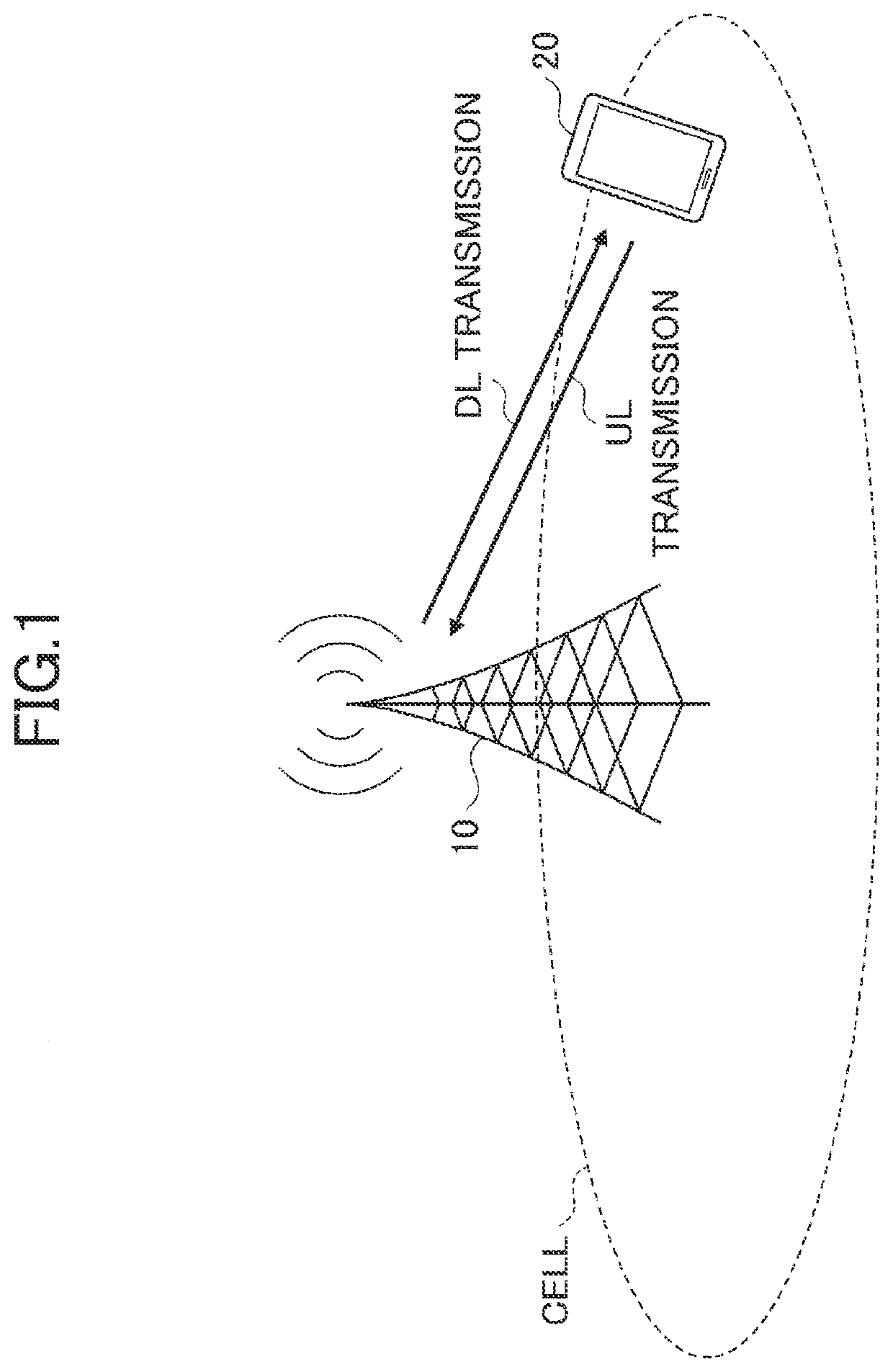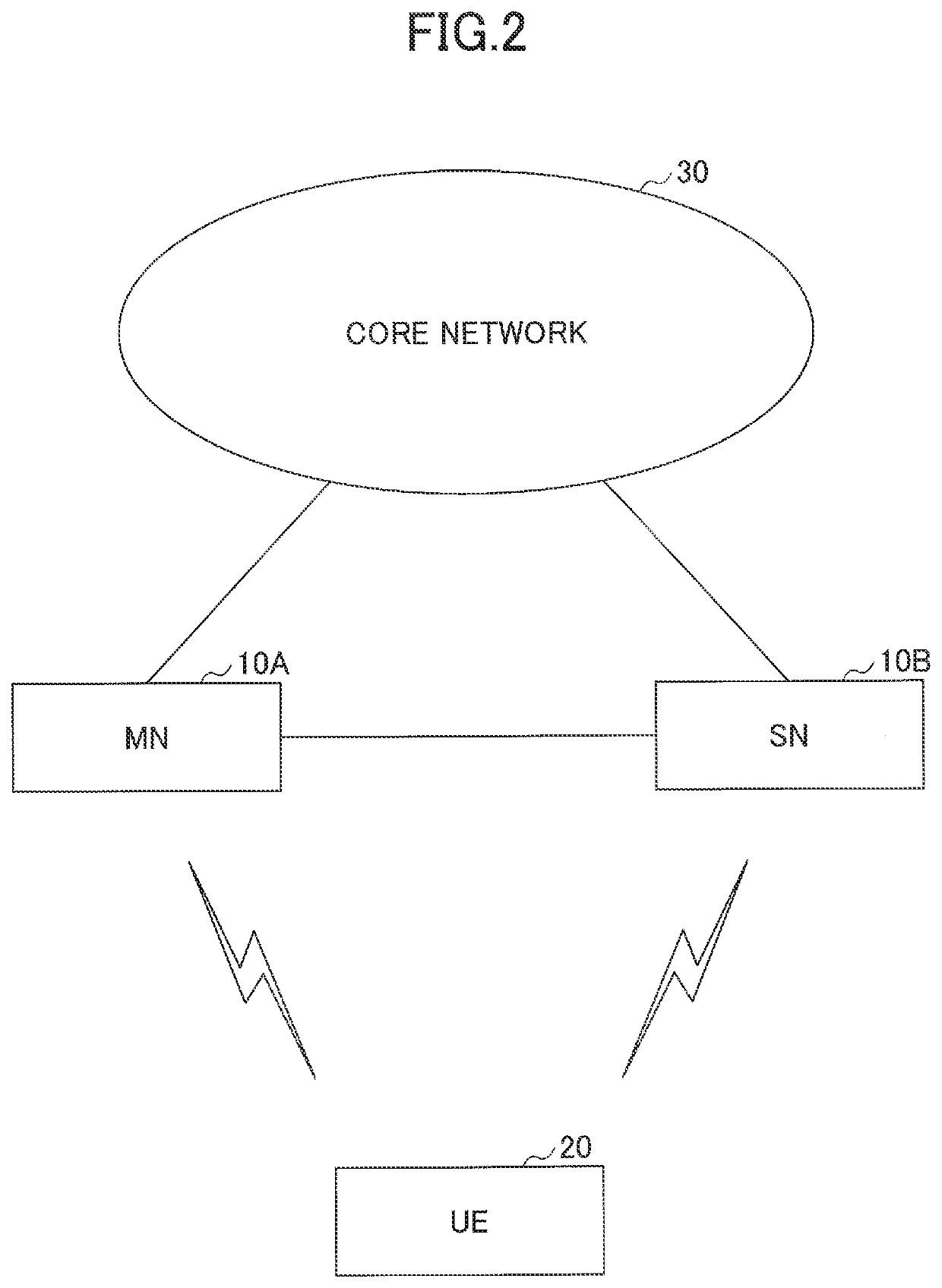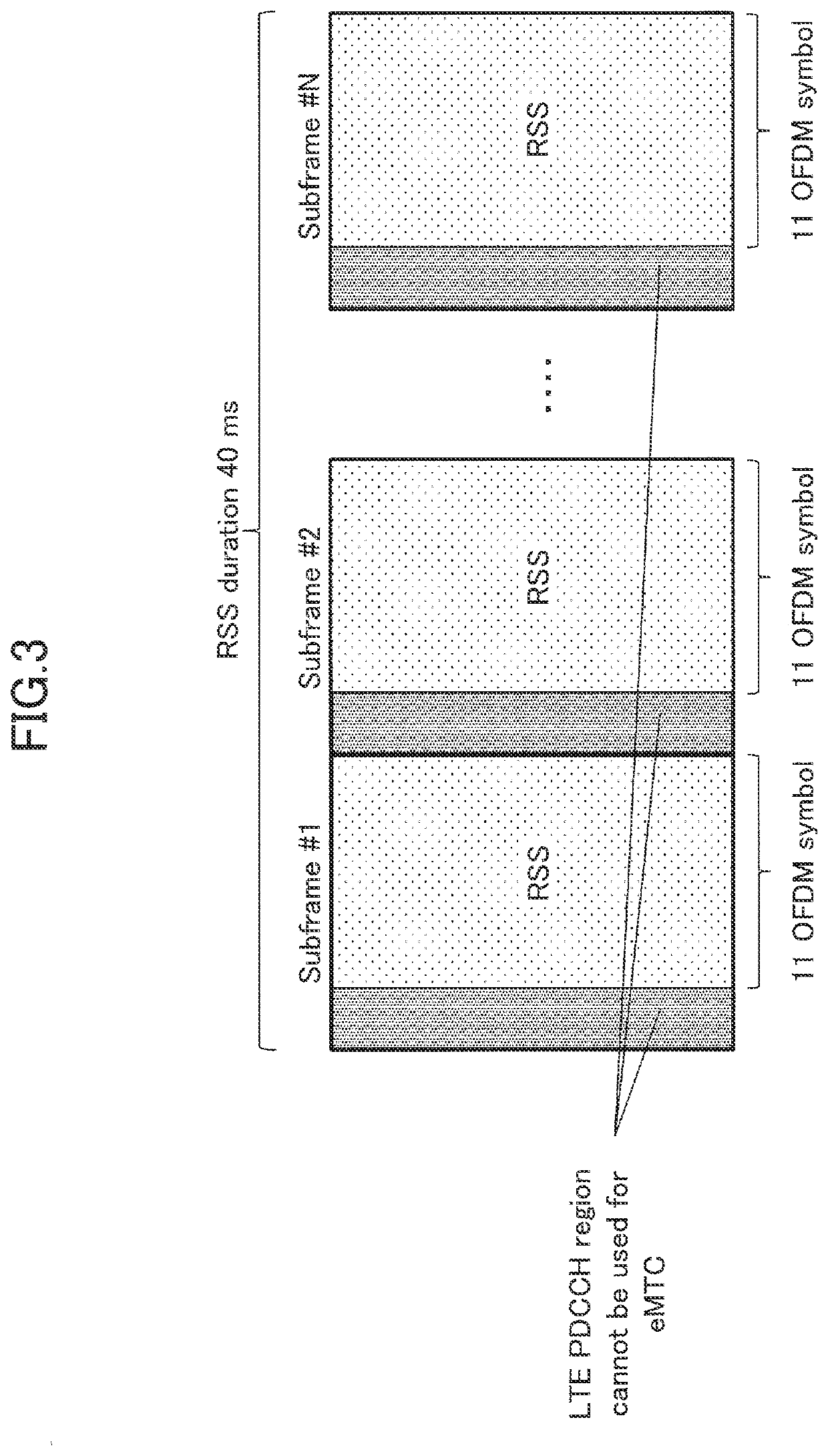Terminal
- Summary
- Abstract
- Description
- Claims
- Application Information
AI Technical Summary
Benefits of technology
Problems solved by technology
Method used
Image
Examples
example 1
[0066]As illustrated in FIG. 6, RSS frequency resource locations (frequency locations) can be configured as appropriate in the LTE system bandwidth and cell-specific configuration is possible.
[0067]However, when such RSS frequency locations are assumed, there may be a possibility that an RSS of a neighbor cell may fall outside a frequency range that can be monitored by the user terminal 20 when RSS-based measurement for the neighbor cell is assumed.
[0068]In such a case, the user terminal 20 would not be able to simultaneously monitor the RSS of the serving cell and the RSS of the neighbor cell, or RSSs of a plurality of neighbor cells. Therefore, there may be a possibility that the user terminal 20 may be forced to perform measurements over multiple RSS periodicities, thus increasing the measurement load.
[0069]FIG. 7 illustrates an example in which RSSs of neighbor cells fall outside a frequency range that can be monitored by the user terminal 20. In the example of FIG. 7, the user ...
example 1-1
[0072]In Example 1-1, the base station apparatus 10 indicates, to the user terminal 20, information indicating whether the frequency location of the RSS of the neighbor cell is common to (the same as) the frequency location of the RSS of the serving cell, or information indicating whether the frequency location of the RSS of the neighbor cell and the frequency location of the RSS of the serving cell are within a specific frequency range.
[0073]The above-described information may be transmitted along with the configuration information of the RSS of the serving cell in S1 of FIG. 4, or may be transmitted at a different timing from S1 of FIG. 4. Further, the above-described information may be transmitted via any of an RRC message, MAC CE, and DCI. The above-described information may include identification information for identifying the neighbor cell (such as the cell ID of the neighbor cell). The identification information allows the user terminal 20 to understand from which neighbor c...
example 1-2
[0085]In Example 1-2, the base station apparatus 10 indicates information on the time location of the RSS of the neighbor cell to the user terminal 20. Based on the information, the user terminal 20 determines whether the frequency location of the RSS of the neighbor cell is common to the frequency location of the RSS of the serving cell, or determines whether the frequency location of the RSS of the neighbor cell and the frequency location of the RSS of the serving cell are within a specific frequency range. That is, in Example 1-2, the user terminal 20 is indicated as to whether the frequency location of the RSS of the serving cell is common to the frequency location of the RSS of the neighbor cell, or indicated as to whether the frequency location of the RSS of the serving cell and the frequency location of the RSS of the neighbor cell are within a specific frequency range, implicitly.
[0086]For example, the information on the time location of the RSS of the neighbor cell may be i...
PUM
 Login to View More
Login to View More Abstract
Description
Claims
Application Information
 Login to View More
Login to View More - R&D
- Intellectual Property
- Life Sciences
- Materials
- Tech Scout
- Unparalleled Data Quality
- Higher Quality Content
- 60% Fewer Hallucinations
Browse by: Latest US Patents, China's latest patents, Technical Efficacy Thesaurus, Application Domain, Technology Topic, Popular Technical Reports.
© 2025 PatSnap. All rights reserved.Legal|Privacy policy|Modern Slavery Act Transparency Statement|Sitemap|About US| Contact US: help@patsnap.com



